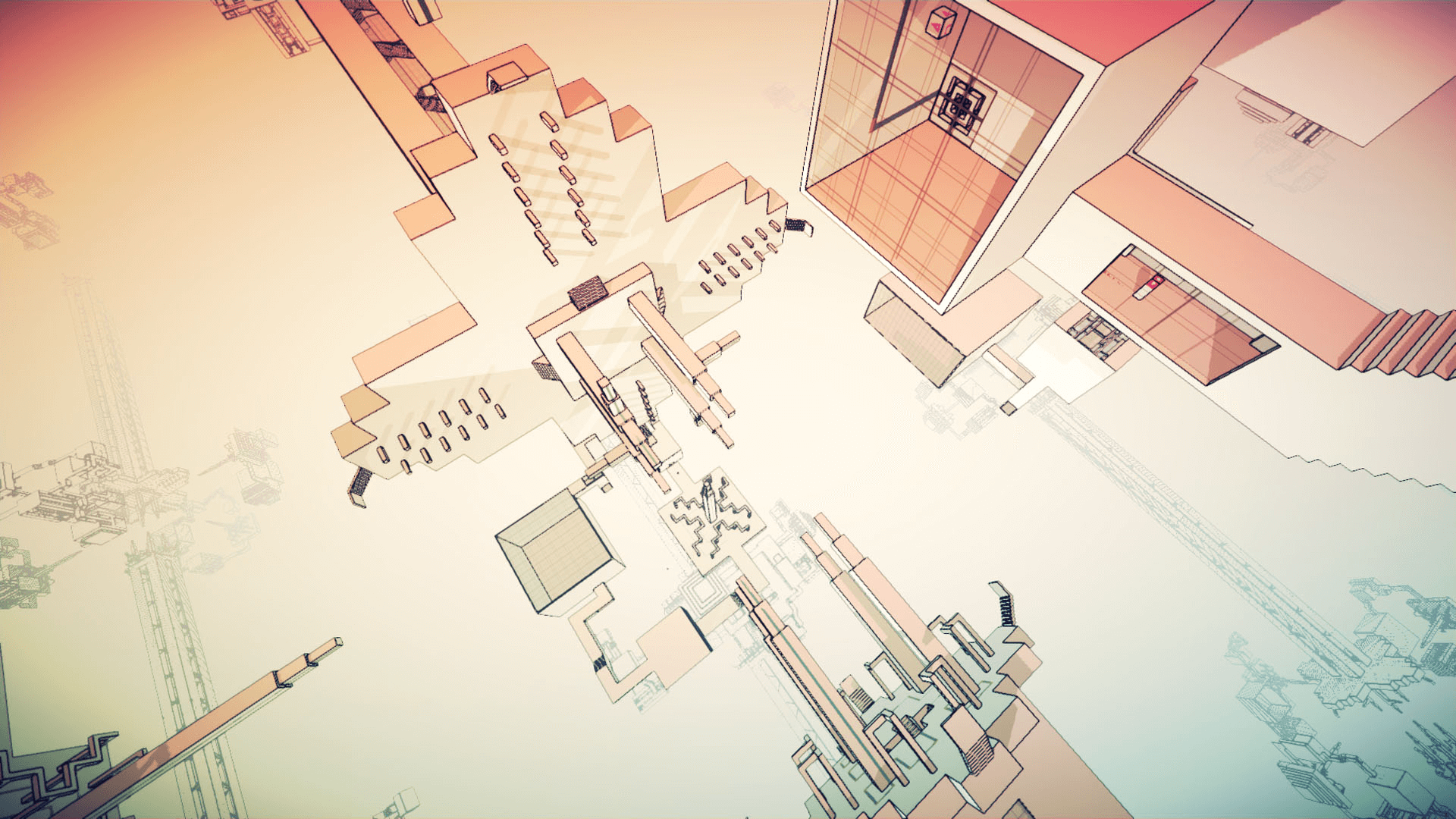
"The intersection of art and science": an interview with William Chyr

How does your previous work - science, your installations, balloon art and your work performing at the Circus - influence your work on Manifold Garden?
My installation work focused a lot on our relationship to space, and this is definitely a major focus in Manifold Garden. In the game, you have the ability to change the direction of gravity and walk on walls. Already, the method of navigating space is different.
In addition, the game also explores impossible world geometry, such as having the world wrap around in every direction. In a world like this, traveling in any one direction will bring you back to where you started. You can actually “travel down” to “go up”. The game destroys preconceived notions of up and down, and builds up new ones.
My background in physics has played a large role in how I think about puzzle design. Solving a puzzle should feel like making a physics discovery. Everything is part of a system, which you slowly uncover, and the “ah ha” moment comes from forming new mental models that make sense of the world.
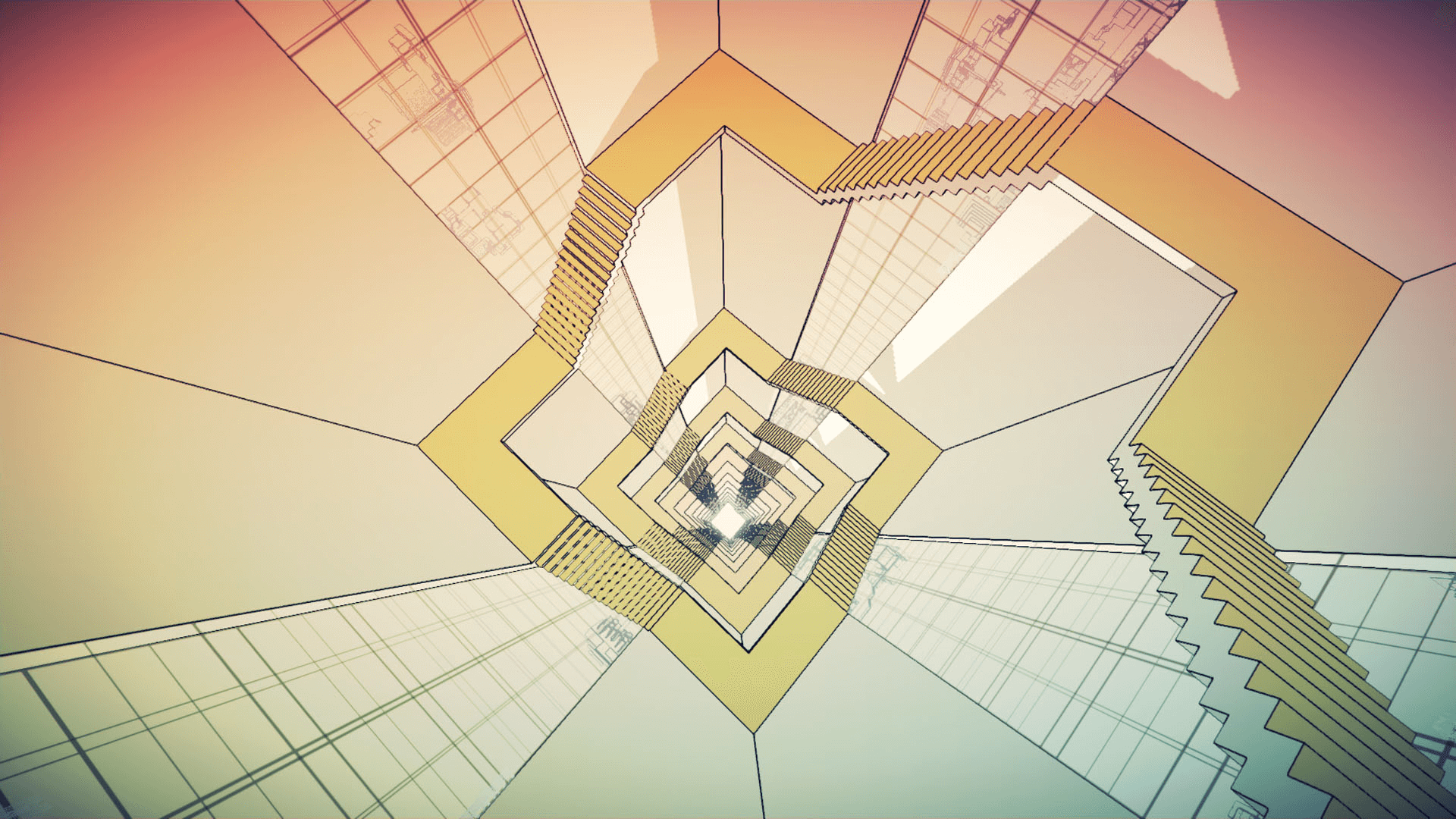
You say yourself that your're relatively "new to video games" - why did you first take an interest in developing?
I went into games initially because I wanted to change the medium I was working with. At the time, I had been doing a lot of work with installations using balloons, and had become typecast as the “balloon guy”. While it was great to have work that was easily recognizable, it also limited the kind of work I could do.
I started to look into other mediums, such as glassblowing and metalworking, but nothing felt right. A friend then told me about some of the stuff that was happening in the independent game scene, and showed me works from people like Jonathan Blow, and studios like Tale of Tales and Thatgamecompany. At the time, I hadn’t played video games in close to 10 years (basically not since the Nintendo 64), so a lot of this work was very different than what I had expected games to be.
It seemed like an incredibly exciting medium for making art. Since I had done some programming, design, and modeling in various capacities, it also felt like a very accessible medium.
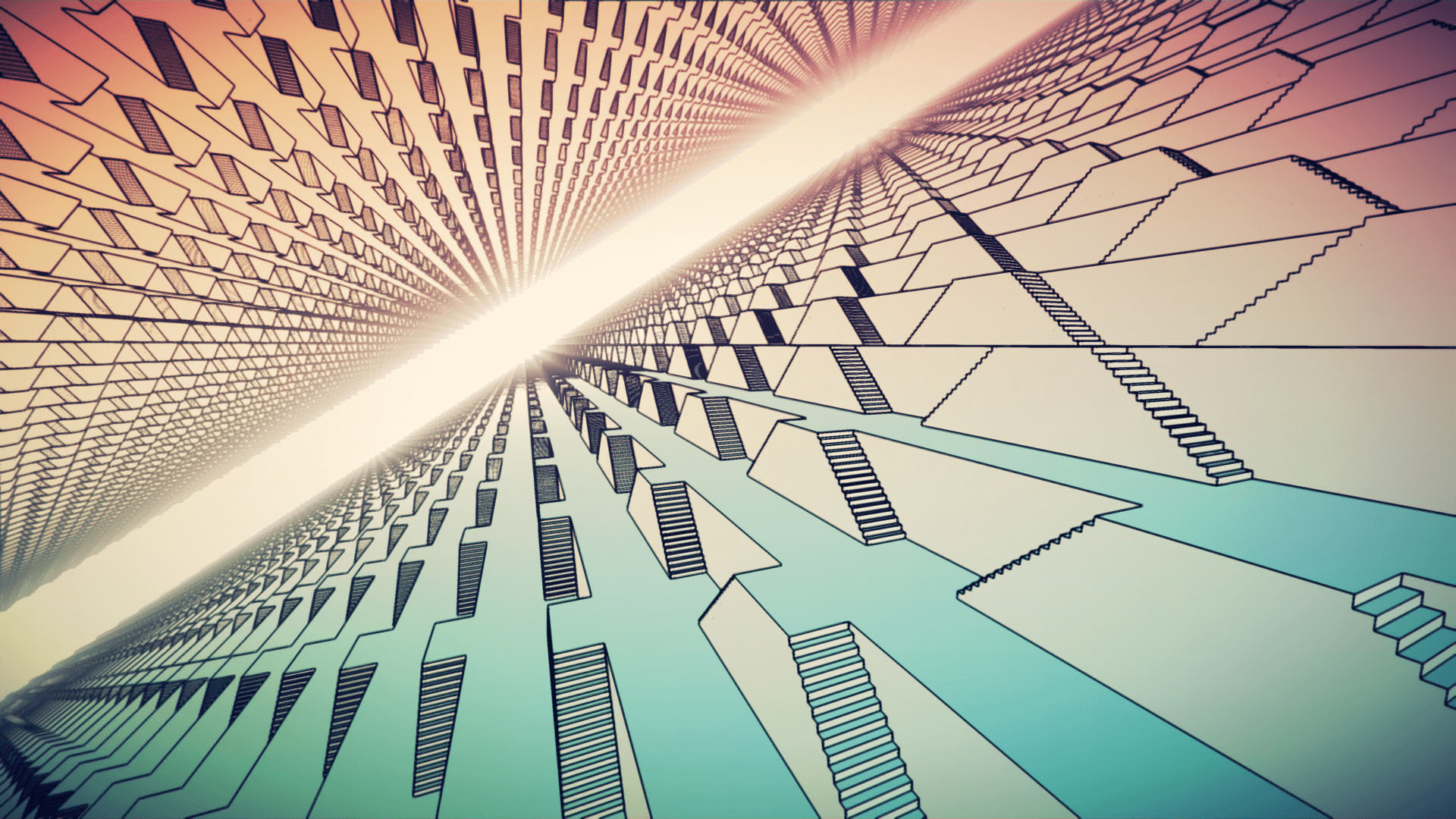
What is, for you personally, the most interesting aspect of developing your game?
Level design is the most interesting aspect for me. I see it as a way of communicating ideas and emotions through environment and architecture.
In Manifold Garden, there are no characters, dialogue, text, or voice over. The art style is also very abstract and minimalist, so there are not very many real world references for the player. There are no textures to indicate what material the walls are made of, for example.
This makes designing levels to be an incredibly interesting challenge, because everything has to be communicated to the player solely through geometry and symbols. To me, it feels like a very pure form of level design.
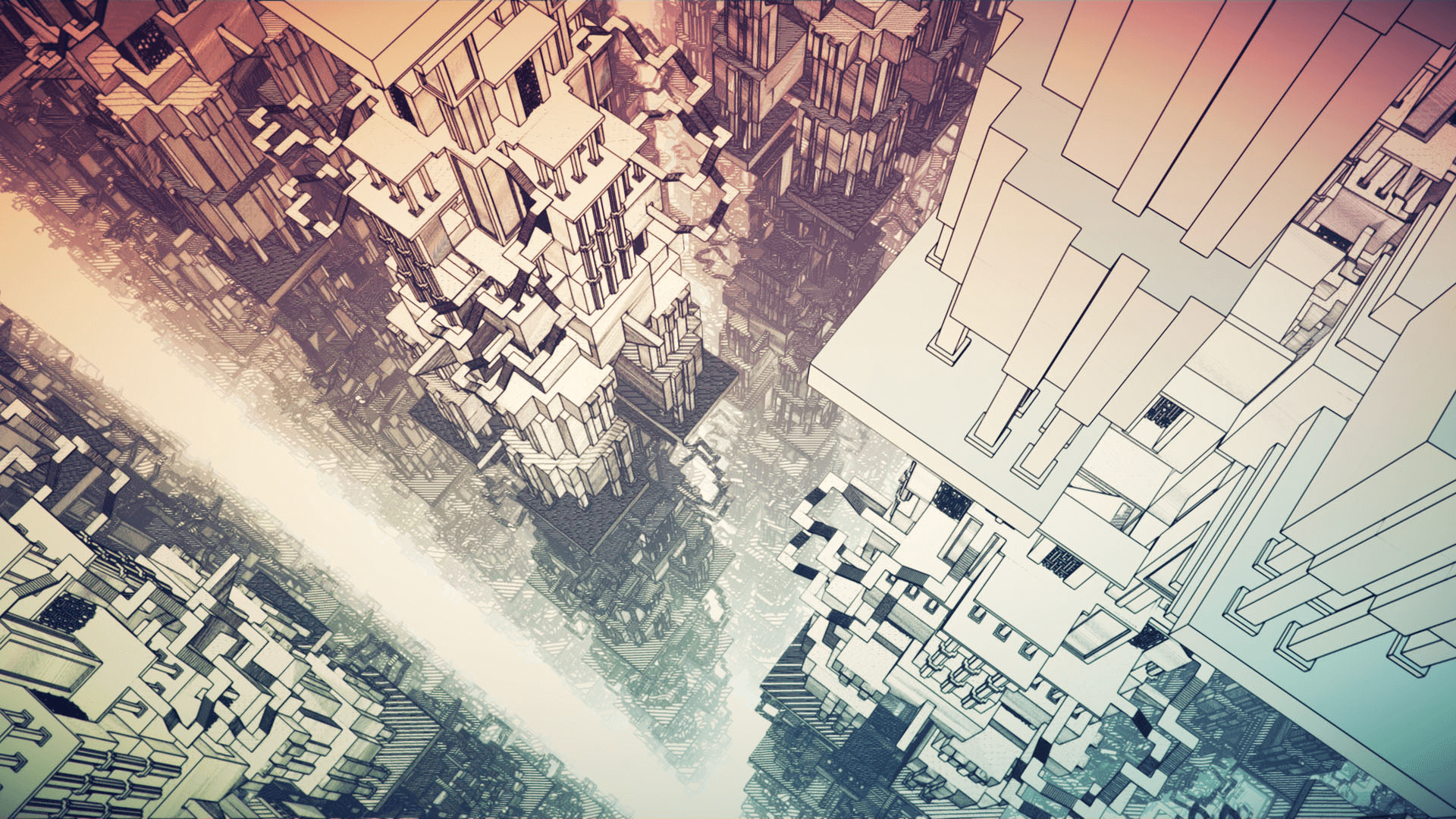
You are really open about your design process, keep a detailed blog, have published literally thousands of screenshots and are even streaming development of the game on twitch. Why? What are the advantages and disadvantages?
One major advantage of an open design process is being able to test out ideas and receive early feedback. It also makes it really easy to ask programming questions, because I can just link people to a detailed explanation of the problem I’m having.
There is a downside to this, which is an overabundance of suggestions. You have to have a very clear idea of how the solution should fit, and be able to know what to pick out and what to cast aside.
Keeping a devlog has also had the bonus of helping me maintain momentum. Often, on days when I’m feeling unproductive, I’ll skim through the devlog just to see how far the project has come. There are several instances in the devlog where I talked about problems that had been bugging me, which seemed impossible at the time, and then several months later, I found a solution for it.
For example, there were artifacts with my edge detection shader, and I struggled with it for about two years. I finally solved it during a stream, and it was a pretty magical moment to capture.

You place a strong emphasis on the game as an artwork, there's a "photography mode", your wallpapers and screens tend to be little pieces of stunning design in their own right. How important is that focus on aesthetic in your work? Is gameplay at the center of the design process, or is it the admittedly spectacular look?
During the first year of development, I was actually convinced that the only thing that mattered in the game was mechanics, and that the art style wasn’t worth working on.
It wasn’t until I went to GDC in 2013 that I changed my mind. I showed the game to a lot of developers, and almost all the feedback I got was “interesting mechanic, but very generic art style”. The week after I got back from GDC, I decided to start focusing on the aesthetics and learn to write shaders.
Since then, aesthetics have definitely become a very important part of Manifold Garden, but it is built on top of gameplay and mechanics. Almost every visual element that is added is there to enhance gameplay in some way, and not at the expense of it.
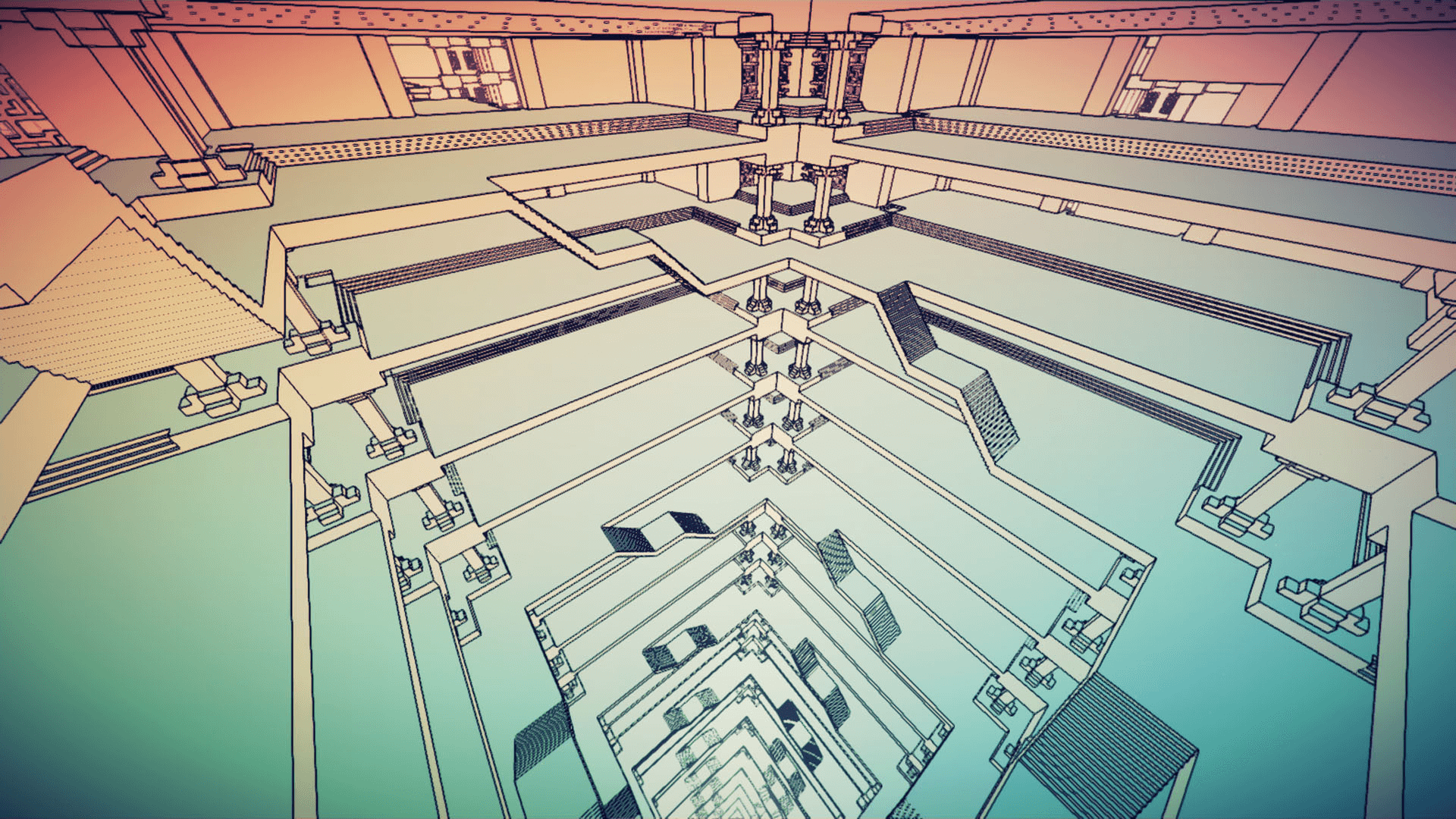
It's quite uncommon for the debut game of an indie dev to partner with an industry giant like Sony. How did that happen?
I'm not sure if it’s that uncommon... Sony has a ton a tremendous effort in bringing indies to their platform.
In 2014, I showed the Manifold Garden at about 14 events around the world. Sony saw it at a few of them, and then invited me to show the game at PlayStation Experience. I was actually ready to stop showing the game at that point as I was so exhausted, but it was just too good of an opportunity to pass up.
I got licensed, Sony sent me a devkit, and that's how that got started.
Games are exhibited at the MOMA, yet there is still a certain prejudice towards videogames in the art world. Do you see yourself as an interloper in any way?
I actually think there have been a lot of effort in recent years to bridge the gap between the art world and games. When I talk to people in the art world about Manifold Garden, they're actually pretty excited about it and accepting of it.
I recently had an exhibition of Manifold Gardens prints with Video Game Art Gallery, which is a perfect example of an arts organization that’s embracing games.
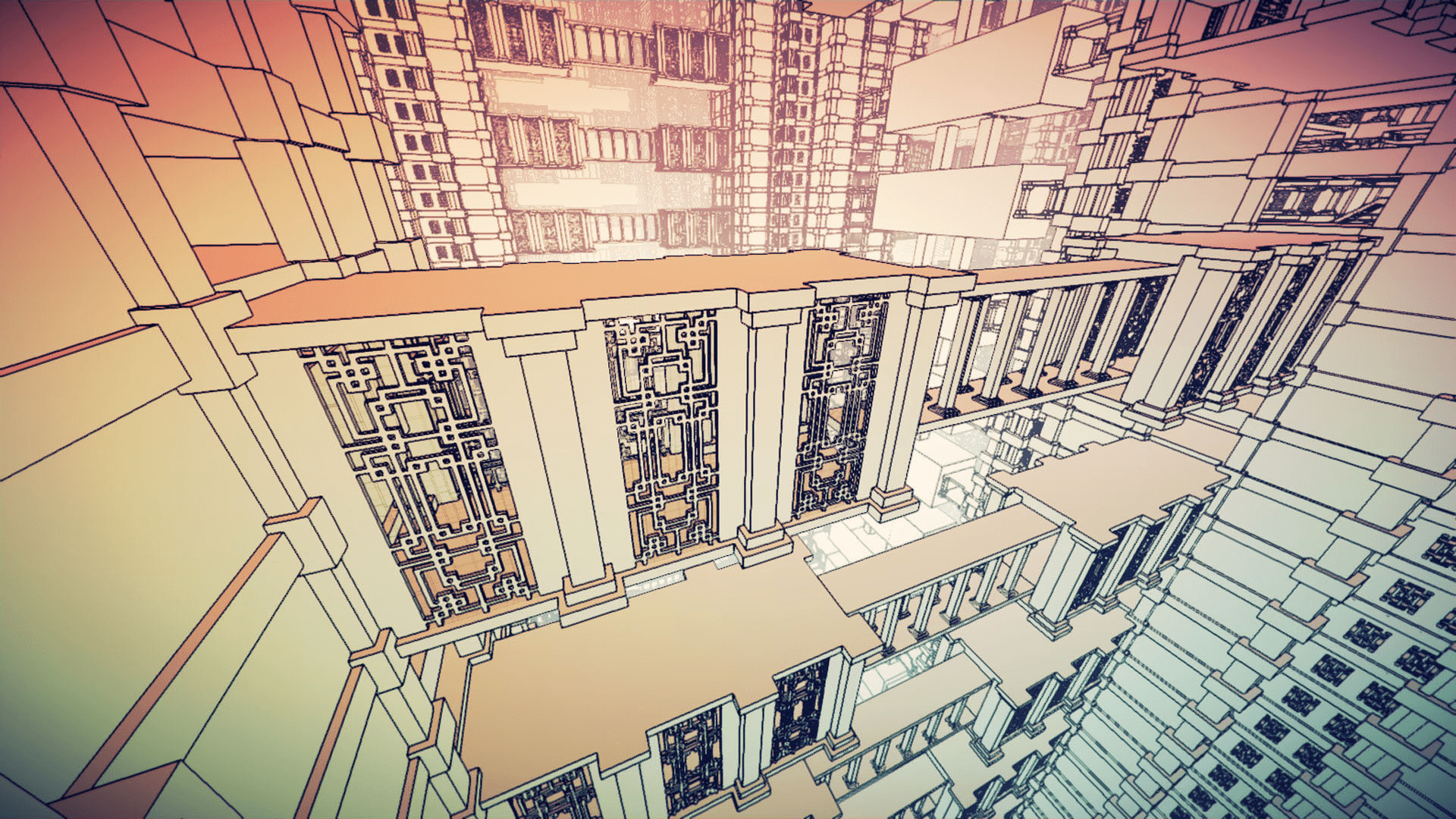
A few years ago, Tale of Tales coined the term 'not-games', on one hand to make games more palatable for the art world and on the other hand to defend against 'gamers" claims that their games lacked too many traditional elements to be considered games. Is a distinction like that necessary?
There definitely is a lack of proper terminology when it comes to games. A lot of people talk about the relationship between comics and graphic novels, and as far as I know, there hasn’t really been a term that’s the equivalent of graphic novels for games. Interactive digital experience? That doesn’t quite roll off the tongue as well.
Ultimately, these are just ways to categorize things. I don’t think it’s necessary, but I suppose it does help when it comes to discussions, just so everyone is on the same page.
Did you play Alexander Bruce's Antichamber? There is a definitive relationship in style and in the use of 'non-Euclidian space'. What did you think of it?
I did play Antichamber and really enjoyed it. A lot of people often bring up the use of non-Euclidean space in that game, but for me, the biggest lesson I learned from Antichamber is the non-linear pacing of the puzzles. It allows for players to take a variety of different paths to arrive at the same place, which I really liked.
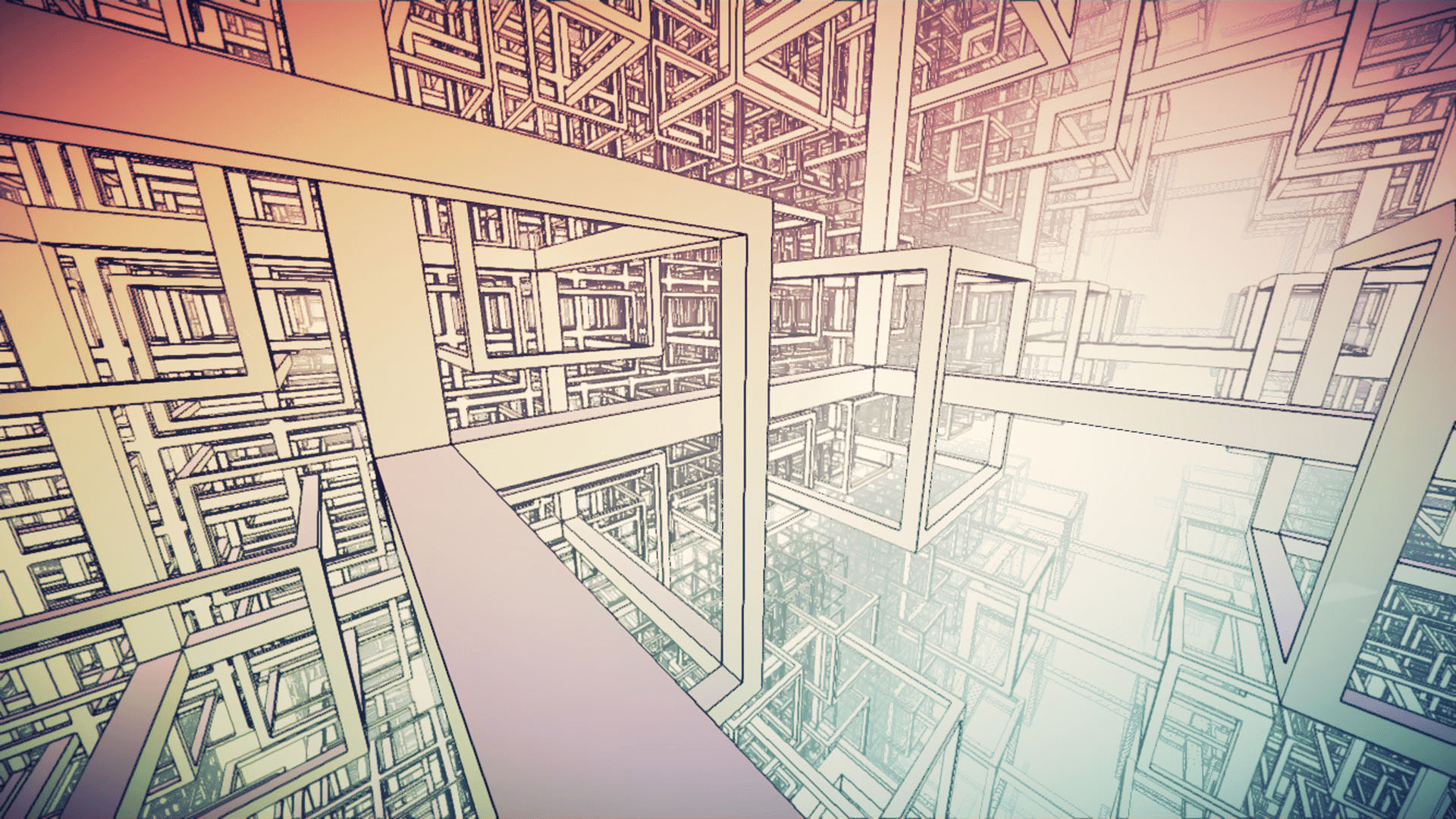
Another game of note that comes to mind is ustwo's Monument Valley, which was a great success and succeeded in implementing MC Escher-like level design. Did you play it, and what's your opinion of it, if so? Is MV's success and recognition an advantage or a disadvantage for your game?
I did play it and really enjoyed it. It’s visually stunning, and Ustwo did a fantastic job with making it very accessible.
Monument Valley’s success is certainly very encouraging, but it’s hard to know what to take away from that, as it’s a very different game from Manifold Garden. It did inspire me to continue refining the visuals of my game, as well as to be more playful with “game feel”, which I think MV did a great job with.
Do you think that artistic games like Manifold Garden will play a part in video games' 'coming of age', i.e. their acceptance as more than 'mere entertainment'? Is that, for you, even something to aspire to?
I do think that the acceptance of games as more than mere entertainment has already happened, and there are a lot of developers and designers currently participating in the dialogue. I’m certainly happy to contribute to that.

